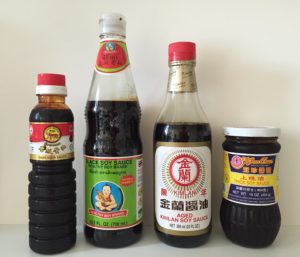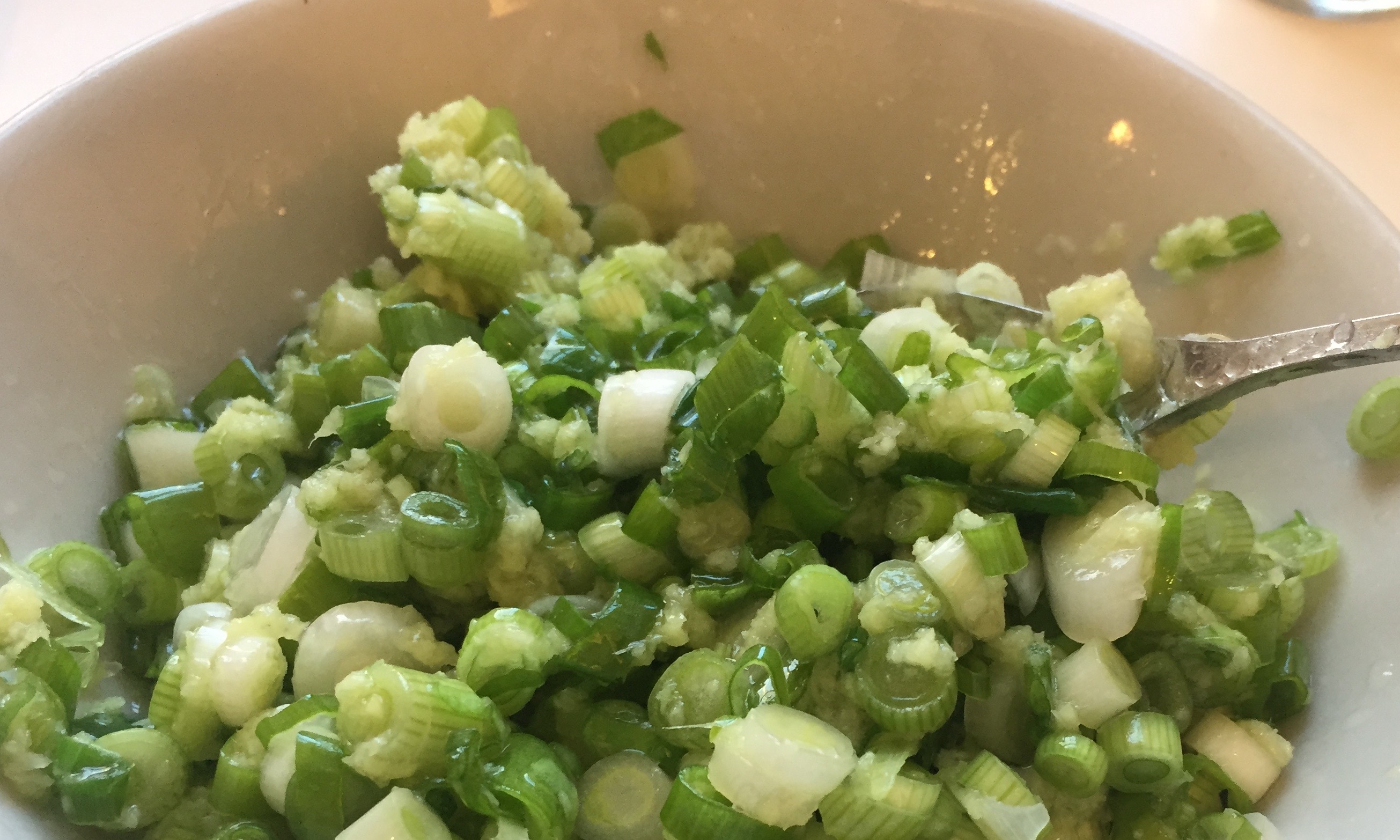
There are two kinds. Dark soy sauce that is liquid like regular soy sauce but aged, and darker in color. (Third from left in photo.) And thick, dark soy sauce that is sweet and has the viscosity of molasses. (Other bottles in photo.)
Both types are used for braising mushrooms, vegetables, chicken and meat, as seasoning in fried noodles and soup, and for making sauces. They are also used as dipping sauce.
–Dark soy sauce
Aged soy sauce is used commonly in Cantonese food. Unlike the other dark soy sauce sauce, this one is not sweet.
Kim Lan is Taiwan’s most popular brand for soy sauce. The aged soy sauce above was recommended to me by a Taiwanese who used it to make the tastiest Hong Shao Ro braised pork belly. I have used it ever since. Other aged soy sauce made in Hong Kong and Guangdung Province are also tasty.
I recommend having a bottle of this for braising, and for noodles.
–Sweet, dark soy sauce
There are no standard names for these sauces. They are called thick soy sauce, sweet thick sauce, or black sweet sauce. Each taste slightly different with varying degrees of sweetness. I use the Tiger Brand sauce, at extreme left, in Chicken Rice.
BOTTOM LINE: I don’t think they are essential in the Chinese pantry.
These very gooey dark soy sauces are popular in Singapore, Malaysia, Thailand and Indonesia and not typically used outside of these areas. We add it in fried rice noodles, Char Kway Teow, to make it dark and a little bit sweet. Char Kway Teow is a little like Thai Pad See Ew.
Sweet, dark soy sauce is an important ingredient in Tauyu Bak which is braised pork belly cooked Hokkien and Teochew style in Singapore.
I wonder if sauce makers in South East Asia came up with this blend of sweet, dark soy sauce as a short cut to braising. Interestingly, the Chinese in Taiwan, Shanghai and Sichuan have a similar braised dish, Hong Shao Ro, which doesn’t use this gooey sauce. Instead they use regular soy sauce and add sugar to it in order to caramelize the pork, giving it a red tinge, hence hong, which means red. The braise is cooked over low heat until the liquid is reduced to a thick, rich sauce. You see, you can make it without the dark sweet sauce, even though I can heard my friends in Singapore telling me I’ve moved to the dark side.


